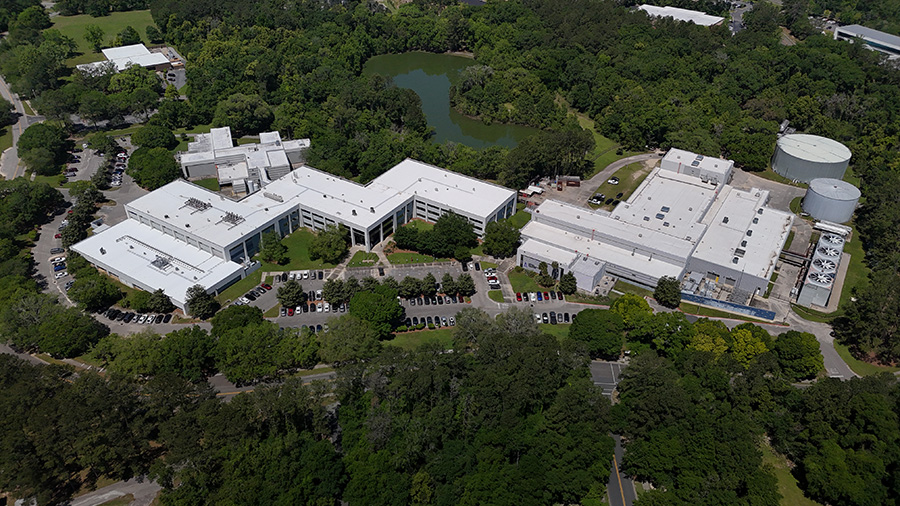
The National High Magnetic Field Laboratory (NHMFL), funded by the National Science Foundation and the State of Florida, was awarded through peer-reviewed competition to Florida State University in August 1990. The laboratory is operated by a multi-institutional consortium comprising Florida State University, the University of Florida, and Los Alamos National Laboratory.
The NHMFL has strong ties with the FSU physics department. It supports physics graduate students who wish to pursue research in areas of condensed matter of interest to the lab. Several professors of the physics department are associated with the NHMFL (see list below).
The NHMFL is one of the country's newest national facilities dedicated to all qualified users from other academic institutions, national laboratories and industry. As an international users facility, it performs the following functions:
- Develops and maintains research facilities open to all qualified users and supports magnet related research in biology, bio-medicine, chemistry, engineering, geo-chemistry, materials science and physics;
- Establishes a strong and active in-house research program in partnership with external users that uses and enhances the facilities and promotes the development of new frontiers in science and engineering;
- Establishes a magnet science and technology program in partnership with the private sector that enhances magnet and magnet materials technology and furthers U.S. competitiveness; and
- Develops educational opportunities within the thrust areas of the laboratory that respond to national concerns for public awareness of science and engineering and foster the involvement and participation of postdoctoral candidates and students in graduate, undergraduate and K-12 programs.
The NHMFL is the only laboratory of its kind in the Western Hemisphere, and one of a dozen such facilities in the world. It is staffed by a team of over 400 staff, including over 120 Ph.D. scientists and professional engineers. It is also the world's largest magnetic field laboratory at 330,000 square feet and highest powered facility with an extremely quiet 40 megawatt power supply. The NHMFL houses some of the world's highest field magnets that have been designed and advanced by an in-house engineering group. The continuous field magnet systems available to users include resistive, superconducting and hybrid magnets. Resistive magnets with fields up to 33.1±0.2 Tesla (or 36.1 Tesla using Holmium flux concentrator pole pieces) are available in a 32mm bore, NMR magnets with high homogeniety to 24.6 Tesla (~1Ghz), and pulsed field magnets to 63.3 Telsa in 10ms pulses (all these being current world records, although we keep breaking them with new design advances!). Work is progressing on the 45 Tesla hybrid continuous magnet, which should come on line next summer. In addition, a variety of superconducting magnets support research in condensed matter and magnetic resonance studies.
The laboratory has a strong and active research program in condensed matter physics, in both theory and experiment, and is headed by NHMFL chief scientist and Nobel laureate J. Robert Schrieffer. The in-house faculty, postdoctoral, and graduate students collectively research high temperature superconductivity, organic conductors, heavy fermions, quantum Hall effect, metal-insulator transitions, magnetic superlattices and colossal magnetoresistance.
Condensed Matter Theoretical Physics Faculty
Condensed Matter Experimental Physics Faculty
Christopher Wiebe
Condensed Matter Experimental Physics Graduate Research Faculty
Louis Claude Brunel
Philip Kuhns
Alexei Souslov
Find more information about National High Magnetic Field Laboratory, visit their website.

